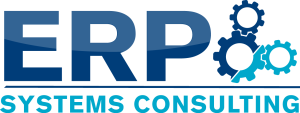 Just as important as the functionality and the shiny new user interface of an ERP System is the technical side of it, especially if you decide to use a “traditional” (on premise) system vs. a cloud based ERP. Cloud based systems are easier on the technical side, but they have other problems and considerations that I will discuss in a future post.
Just as important as the functionality and the shiny new user interface of an ERP System is the technical side of it, especially if you decide to use a “traditional” (on premise) system vs. a cloud based ERP. Cloud based systems are easier on the technical side, but they have other problems and considerations that I will discuss in a future post.
What is “under the hood” of a traditional ERP system you might ask? First and foremost there is the database that the system is built upon. Databases can be proprietary systems that are included in the package e.g. QuickBooks and some versions of Sage’s ERP 100, or standalone database systems like Microsoft’s SQL Server and Oracle that are used by SAP and other high-end systems. Each database has advantages and disadvantages that have to be considered when selecting a new ERP system. Proprietary systems are usually simple, easy to maintain and do not have big demands on your IT infrastructure. This simplicity often comes at the price of usability though. Accessing your data for custom reporting, business intelligence and other applications can be difficult or almost impossible. On the other side of the spectrum are the professional database systems like Microsoft SQL Server and Oracle that give you full control over your data and often include tools for custom reporting and business intelligence, making it easier to get the most out of your system. Unfortunately all that flexibility comes quite literally at a price. Most likely the database has to be purchased separately and needs to run on a separate server, significantly increasing the cost of the project. Maintenance is also a concern, as your IT department must have the resources for it, both in staff and infrastructure. The database system will also have an effect on how the system is backed up and secured from unauthorized access all items that have to be considered when making a decision to buy a new ERP system.
Beyond the database it is also important to study the effect on your network infrastructure. Does it lag or slow down when many users are online at the same time? A slow system will frustrate the users and cost the company money in lost productivity. Another point to consider is how well the new ERP software will integrate with your other office systems.
Because of this inherent complexity it is very important that your IT department is included in the ERP project from the beginning, preferably at the CIO or IT Director level, as they will be able to properly evaluate the technical side of the project and its effects on the company. The key to a successful implementation is communication between all involved parties and being aware of all requirements and limitations.
Do you have any questions? Do not hesitate to contact me.

Recent Comments